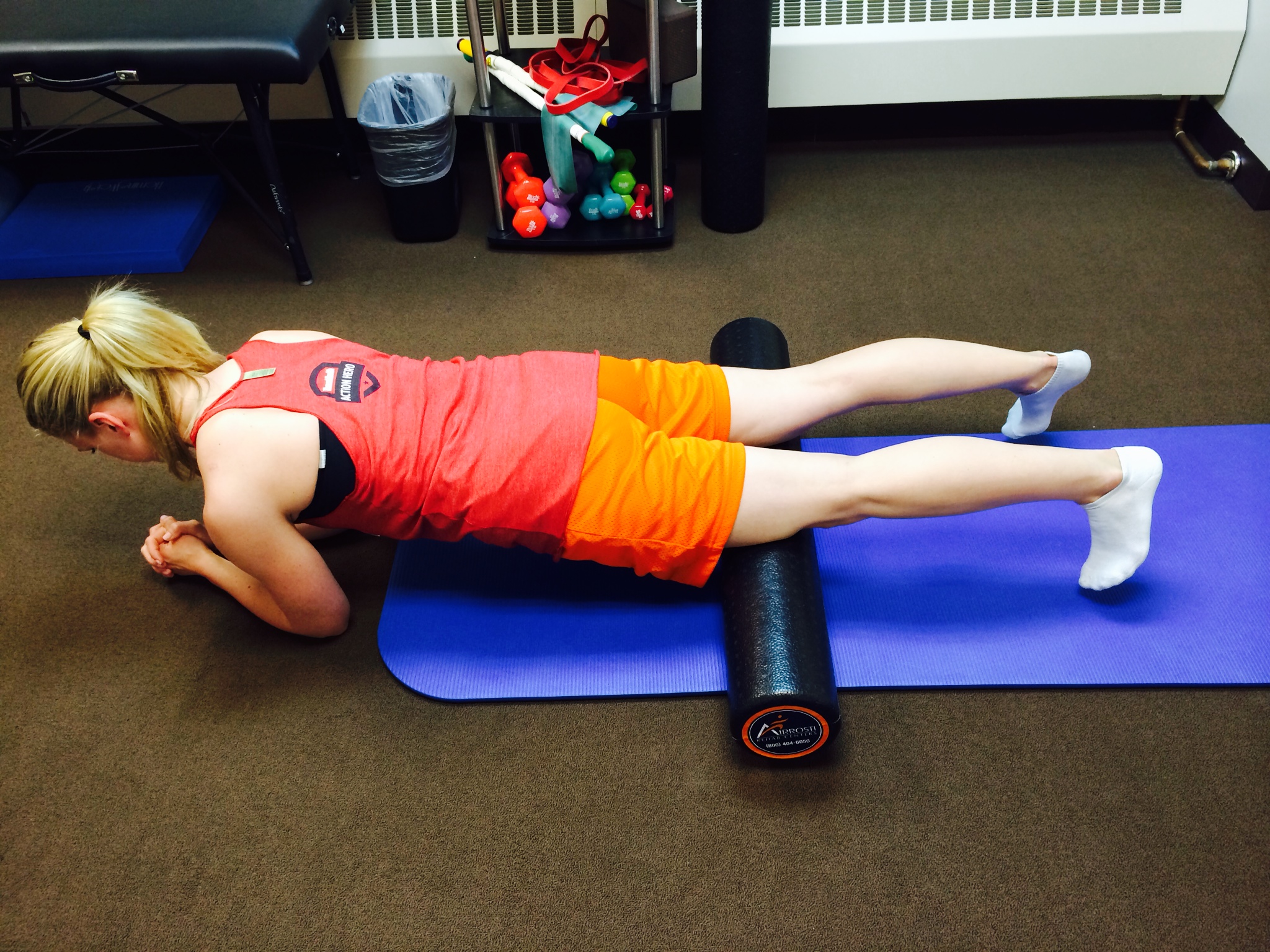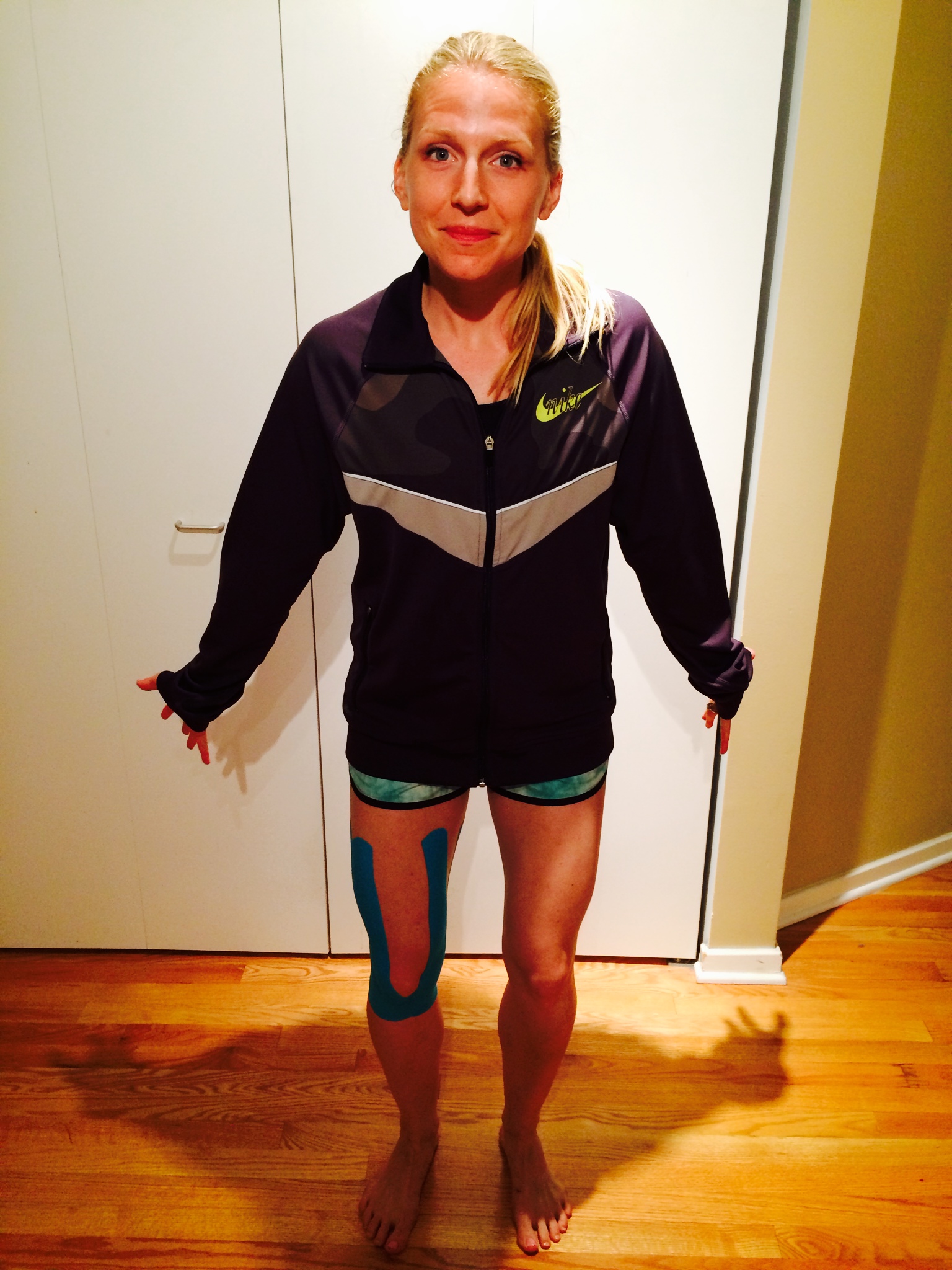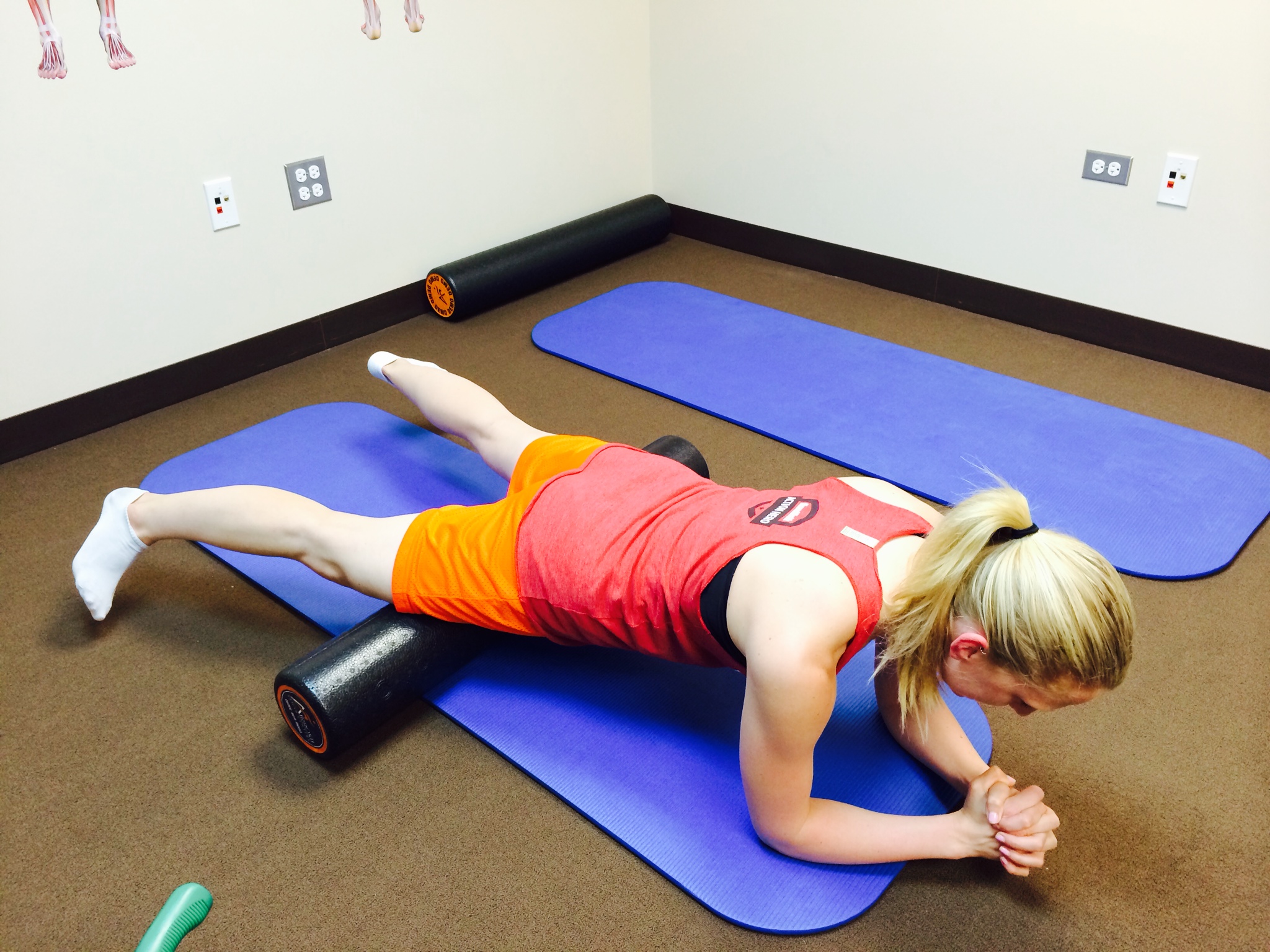Foam Rolling 101: If You Don’t Roll, Now You Roll
{Disclaimer: I had the opportunity to visit Airrosti Rehab Centers to try out their soft tissue injury pain treatment. As always, I only try and write about the things that I like.)
I’ve wanted to train for a triathlon ever since I took swimming lessons, but there’s been a dull nagging pain in my right knee that kept me from moving forward with it.
I visited Airrosti Rehab Center, which offers a two-part therapy. The first part is hands-on care. The doctor digs – actually digs with her thumbs – into the muscles and works through any irregularities in the soft tissues that connect your muscles (your fascia). The second portion of the treatment puts the patient at the wheel. This active part of treatment brings in foam rollers and lacrosse balls and teaches patients how to take the benefits home.
Studies have shown that foam rolling “of the quadriceps, or potentially any other muscle for that matter, was an effective treatment method to increase range of motion without suffering muscle performance.“ Read: foam rolling can help speed muscle recovery and increase range of motion all without getting in the way of your performance.
Throughout my session, Dr. Casey worked one the soft tissue around my right knee and took me through some targeted foam rolling to help me reduce a little bit of pain in my knee.
Oh, and she taped me up with Rock Tape for the very first time.
Three rules for foam rolling:
Rule #1: Buy a dense foam roller. Run into a running store or pick one up online, but if it has too much give to it, you won’t feel the benefits of myofascial release.
Rule #2: Find the tenderness and isolate it. When you find a tender spot, hold your weight on top of it or oscillate over it. Yes it might hurt a little bit, but like a good deep tissue massage, if it’s just your muscles that are hurting, keep rolling over that spot.
Rule #3: Continue to roll back and forth over the targeted area until the tenderness diminishes, but stop if you experience tingling or numbness.
Here are your basic rolls:
Roll out your rectus femoris (the large central muscle in your quad) by keeping your feet shoulder-width distance apart with your toes pointed at the floor. Roll from the spot above your knees to your hips, stopping to really embrace the tenderness. Keep your core tight throughout all of these exercises, like you’re doing a plank (bonus).

Roll out your vastus medialis (the internal quad muscle) by keeping the feet just about the length of foam roller apart. Toes should point out.
And finally, roll out that Vastus Lateralis (external quad muscle) by keeping your feet hip-width distance and pointing your toes in. Roll those muscles out.
You’re training hard and taking care of your body. But if you’re not foam rolling, you’re missing out on the universe’s gift to your recovery.
Do you foam roll? How has it helped you?


















2 thoughts on “Foam Rolling 101: If You Don’t Roll, Now You Roll”
Comments are closed.